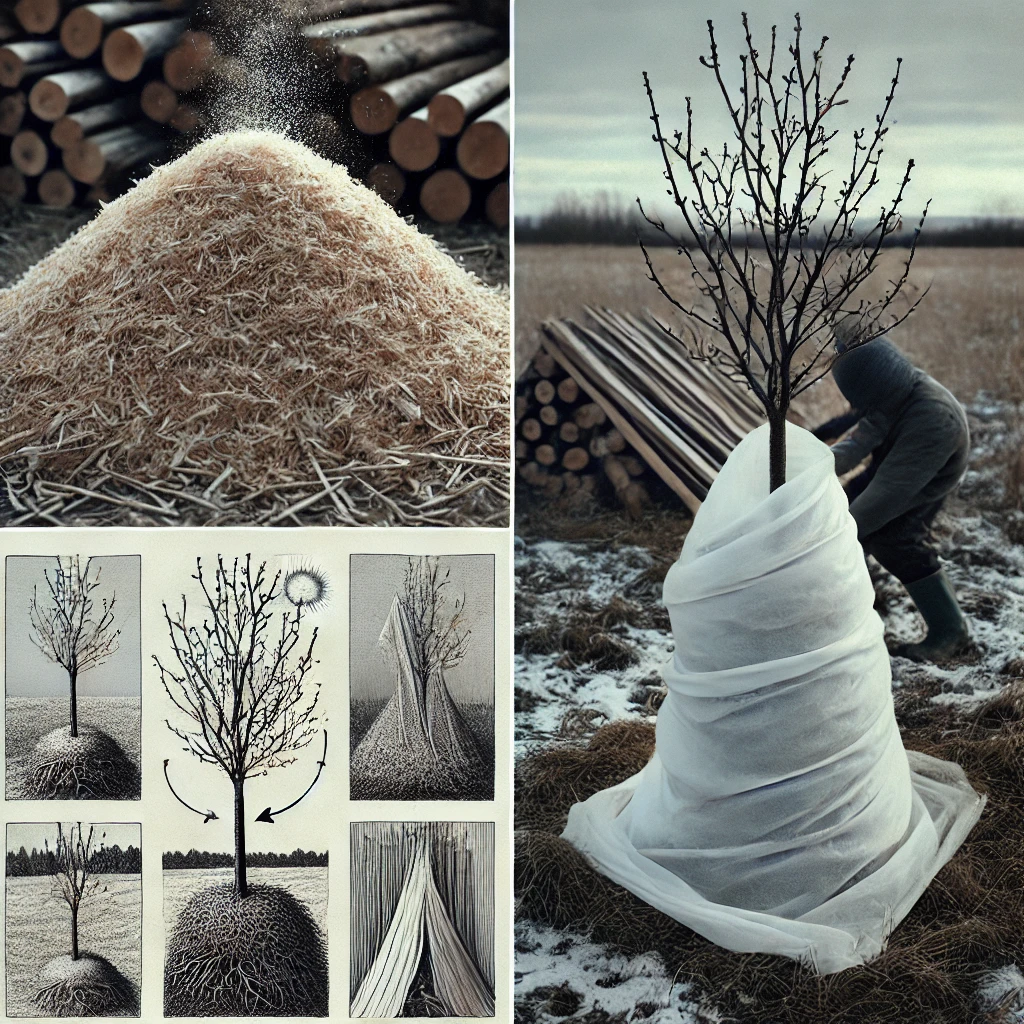As winter approaches, it’s crucial to take steps to protect your trees and shrubs from the harsh conditions that cold weather brings. The preparation process not only helps preserve the health and vitality of your plants but also ensures they thrive when spring returns. Here’s a comprehensive guide to preparing your trees and shrubs for winter.
1. Start with Proper Watering
Watering before the ground freezes is one of the most important steps in winter preparation. Trees and shrubs lose moisture during the cold months, especially during periods of strong winds and dry air.
- Water deeply in the fall: Give your plants a thorough, deep watering in the weeks leading up to the first freeze, especially for newer trees and shrubs that are still establishing roots.
- Mulching for moisture retention: Apply mulch around the base of trees and shrubs to help retain moisture and prevent the soil from freezing too quickly, giving roots more time to absorb nutrients.
2. Prune with Caution
Pruning is essential but needs to be done carefully to avoid leaving plants vulnerable to winter damage.
- Remove dead or diseased branches: This helps prevent breakage during heavy snowfalls or ice storms.
- Prune at the right time: Avoid heavy pruning right before winter, as it can stimulate new growth that may not survive the cold. Late winter or early spring is ideal.
- Shape for stability: Thinning out dense shrubs can reduce snow buildup, minimizing the risk of branches breaking under heavy snow.
3. Insulate with Mulch
Mulch acts as an insulating blanket for plants during winter.
- Apply mulch correctly: Use 2-4 inches of organic mulch like wood chips or shredded leaves around the base of the plant. Keep mulch a few inches away from the trunk to prevent rot.
- Benefits of mulching: Mulch stabilizes soil temperatures, protects roots, and reduces the risk of freeze-thaw damage.
4. Fertilize in Late Fall
Fertilizing in the fall helps strengthen roots for winter survival.
- Use slow-release fertilizer: This provides a steady supply of nutrients over time. Avoid fast-acting fertilizers that stimulate new growth vulnerable to frost.
- Focus on phosphorus and potassium: These nutrients support root growth and hardiness, preparing plants for winter stress.
5. Protect Young Trees and Shrubs from Wildlife
Animals like deer and rabbits can cause damage during winter by chewing on bark and branches.
- Wrap trunks for protection: Use tree guards or wraps to protect young trees from animals.
- Use deterrents: Consider applying animal repellents or installing wire mesh barriers around vulnerable shrubs.
6. Shield Against Harsh Winds
Strong winter winds can dry out evergreens and other sensitive plants.
- Build windbreaks: Erect burlap screens around vulnerable plants to protect them from wind exposure while allowing airflow.
- Group plants together: Grouping plants can create a natural windbreak, reducing their exposure to drying winds.
7. Guard Against Salt Damage
In areas where salt is used on roads and sidewalks, plants can suffer from salt damage.
- Choose salt-tolerant plants: If salt use is common in your area, plant salt-tolerant species. Alternatively, use physical barriers to protect sensitive plants.
- Use alternatives to rock salt: When de-icing walkways, use calcium magnesium acetate instead of salt, as it’s safer for plants and the environment.
8. Wrap Delicate Shrubs
Certain shrubs, especially evergreens, benefit from extra protection during winter.
- Use breathable materials: Wrap shrubs loosely in burlap or frost blankets to insulate them from cold temperatures and protect against snow and ice damage.
- Avoid plastic covers: Plastic traps moisture, which can cause fungal growth or suffocate the plant.
9. Monitor and Maintain Throughout Winter
Even after preparation, winter maintenance is essential for plant health.
- Check regularly for damage: Inspect your trees and shrubs after heavy snowfalls or ice storms for broken branches and trim them as needed.
- Shake off heavy snow: Gently remove heavy snow from delicate shrubs and small trees to prevent branches from breaking.
10. Plan for Spring Recovery
After winter, your plants will need care to recover.
- Inspect plants in spring: As temperatures rise, check for winter damage and prune any dead or broken branches.
- Fertilize and water as needed: Once the soil thaws, resume regular watering and consider fertilizing to promote new growth.
Conclusion
Preparing your trees and shrubs for winter ensures they remain healthy and strong through the cold months and are ready to flourish in the spring. By following these steps, you can protect your plants from winter stress, minimize damage from snow, ice, and wind, and give them the best possible start when warmer weather returns.
